
Contents










Local Taste · Written by Yoon Sui Photographed by Studio Kenn
Superb
Suwon Specialty
Galbi
Hwaseong Fortress, a UNESCO World Heritage, and galbi (grilled ribs) are the two things Suwon,
Gyeonggi-do Province, is most famous for. Known for its high quality and juicy flavor,
the meat is available year-round as a favorite traditional food in Korea, and even
novices to Korean cuisine are easily seduced by the marinated galbi grilled over charcoal
with its chewy texture and sweet flavor.
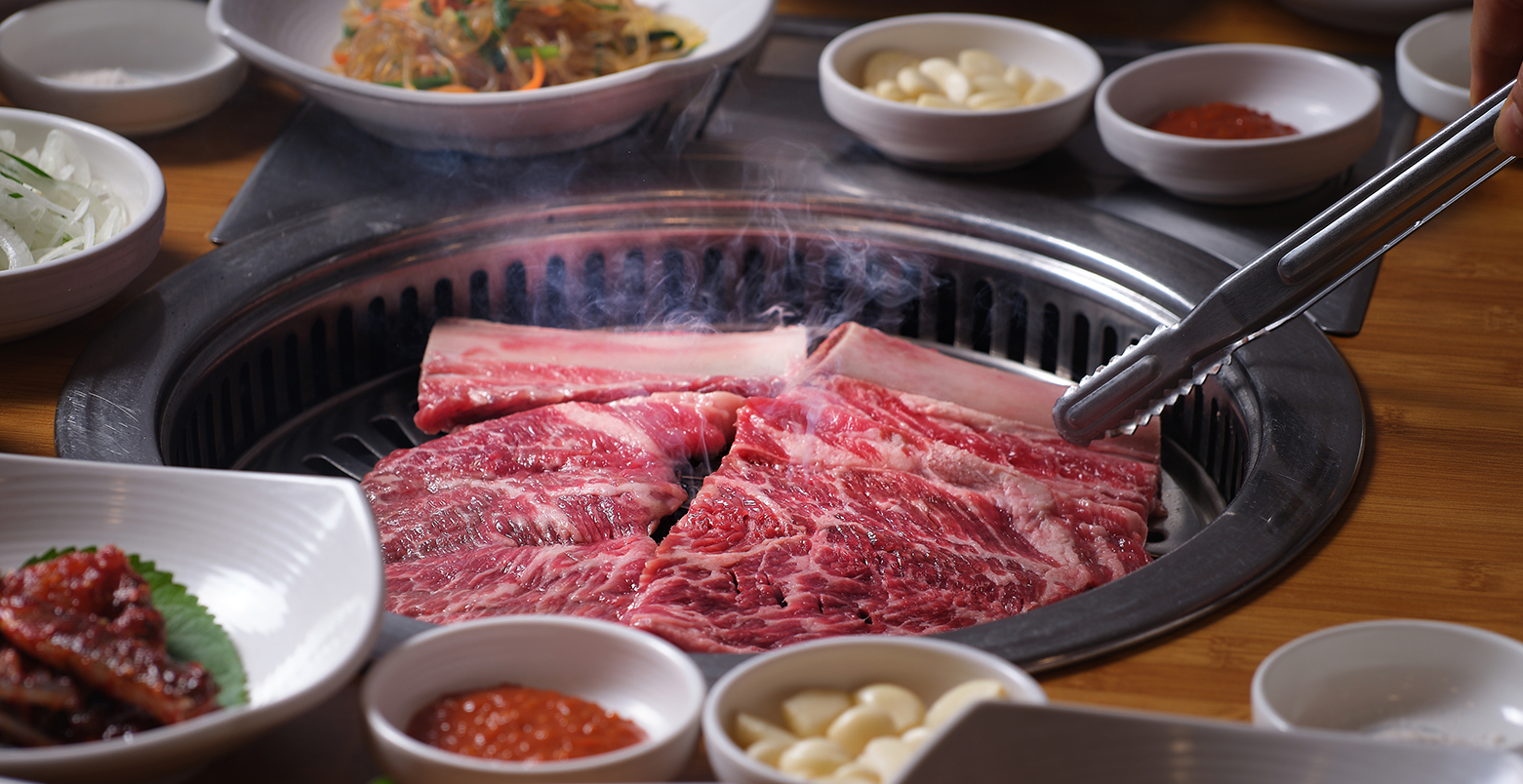
King Jeongjo (1752-1800), the 22nd monarch of the Joseon Dynasty (1392-1910), built Hwaseong Fortress and a garrison farm to develop Suwon into an independent city. To promote farming at the farm, he granted farmers there seed and cows. He took half of their harvest every year and had the farmers rear cattle and give one back every three years. This drastically increased the number of cows in town, resulting in a large cattle market. The market was crowded with cattle sellers and farmers and saw nearly 20,000 heads of cattle exchanged over a year. Suwon thus became the logistical hub for delivering items and foods to Hanyang (former name of Seoul), the capital of Joseon, which turned the city from a small agricultural town into a merchant hub. The cattle market made beef available in the city year-round there, and this made Suwon the perfect place for galbi.
The origin of Suwon’s famous style of galbi dates back to the 1940s, when Lee Gui-seong opened his famous hangover soup restaurant Hwachunok at the city’s Yeongdong Market. To stand out in the heavily competitive market, he put a lot of beef ribs in his soup, and though this strategy raised the soup’s quality, its lack of cost effectiveness limited profitability. Lee wrestled with what to do and came up with marinated and grilled galbi. His charcoal-grilled meat featured a sweet, juicy flavor that became a big hit in town. His restaurant’s fame skyrocketed to the point where its menu was featured in the media and famous figures at the time, including none other than President Park Chung-hee, made their way to Hwachunok. In 1979, the restaurant was permanently closed to make way for a department store, but Hwachunok’s legacy gave birth to many other galbi restaurants. Designating Suwon galbi as its specialty in April 1985, the city has since made efforts to preserve the cuisine.
Variety of Dishes
With its mild taste, galbi is one of the most popular Korean foods among Koreans and non-Koreans alike. The type of galbi varies from regular and marinated grilled ribs to short rib soup. Saeng galbi is ribs without sauce grilled over charcoal with sprinkles of salt that maximize the flavor. Yangnyeom galbi is marinated ribs with a variety of ingredients also grilled over charcoal. These two forms are the best known types of Suwon galbi.
To make yangnyeom galbi, cut a thick slab of the meat into thin slices. Suwon galbi is cut in bigger portions than in other regions. Cut the beef ribs into strips and remove the fat and tendons. Slice the beef from the bones at a width of 0.5cm and make thin cuts in the meat. This can be done by flipping and repeating the cutting a few times until a long strip of thin meat is made. Prepare the sauce using salt, sugar, sesame oil, black pepper, green onion, garlic, ginger, corn syrup and refined rice vinegar and spread the sauce over the trimmed meat.
Suwon galbi uses salt instead of soy sauce for seasoning. Though each restaurant offers its own recipe, a rule of thumb is to mix five parts sugar with one part salt. When the meat is seasoned, score from one side to the other and keep the meat flat. After scoring it horizontally, marinate it for two days to make the ribs juicy and flavorful. The last step is to grill it over charcoal and enjoy.
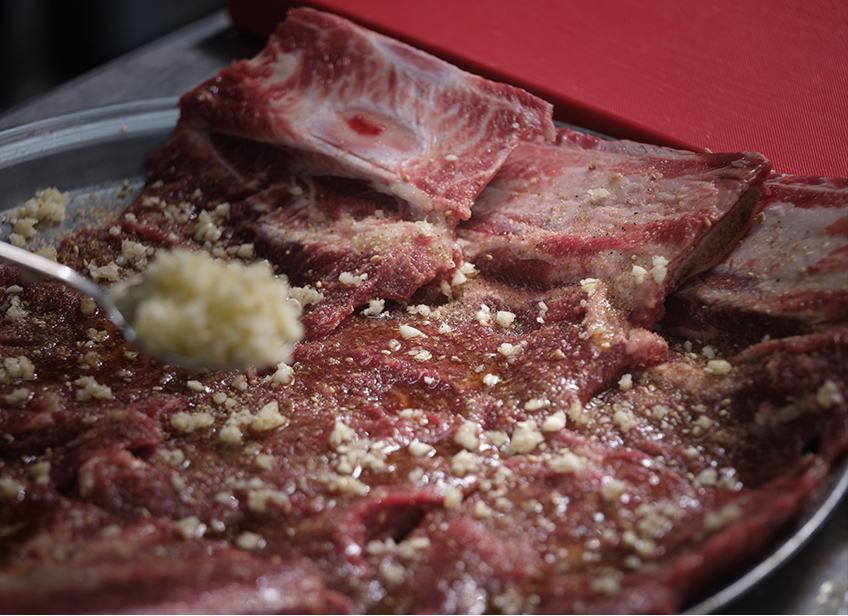
Seasoning is sprinkled on ribs after they are trimmed.
Galbitang (short rib soup) is one of the most popular health foods served to the elderly or young men who briefly come home from military service; this is because ribs have traditionally been an expensive ingredient. People also eat this hearty soup to restore their vitality. While grilled galbi offers the savory taste of ribs, galbitang is much simpler and filling. The same ribs used in grilled galbi provide a more unique experience.
While only water and ribs were used in galbitang in the past, medicinal herbs like ginseng, pine nuts and jujube are now added for more nutrition. Certain galbitang menu items also offer extra ribs for those who like bigger portions or want to eat the meat with their hands. The concept is similar to that of bone broth, except galbitang is simmered just once until the flavor comes out.
Suwon historians recognize the influence of the city’s galbi on Korean culinary culture because Suwon galbi features the ribs as an entree rather than a side dish. Galbi supposedly led to the creation of Korean barbecue culture, in which diners consume the meat first and eat noodles or rice afterwards. Those unfamiliar with Korean food who wish to try the best of the nation’s cuisine will surely hit the spot starting with sweet and savory galbi.
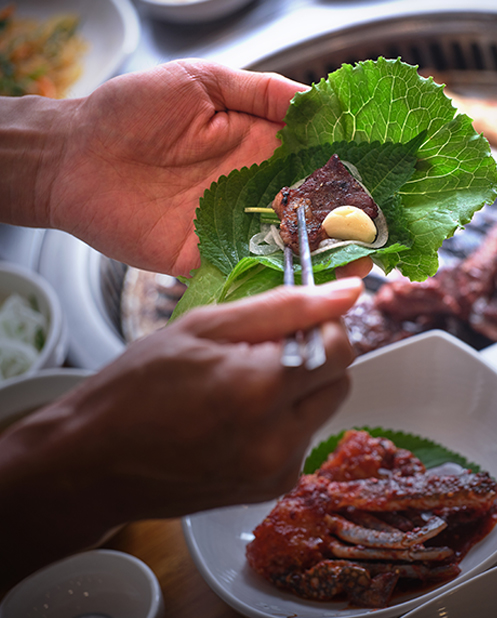 Putting freshly grilled ribs in lettuce wrap is a major part of galbi culture.
Putting freshly grilled ribs in lettuce wrap is a major part of galbi culture.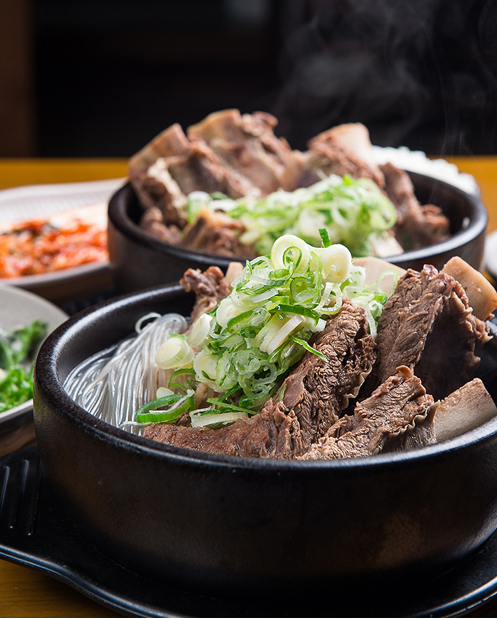 Short rib soup with beef ribs is difficult to find outside of Suwon. © shutterstock
Short rib soup with beef ribs is difficult to find outside of Suwon. © shutterstock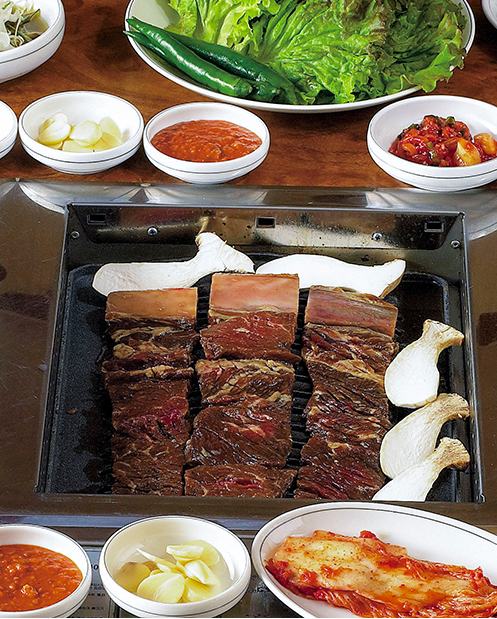 Grilling ribs at dining tables guarantees big fun and amazing flavor for customers. © imagetoday
Grilling ribs at dining tables guarantees big fun and amazing flavor for customers. © imagetodayOther Articles















